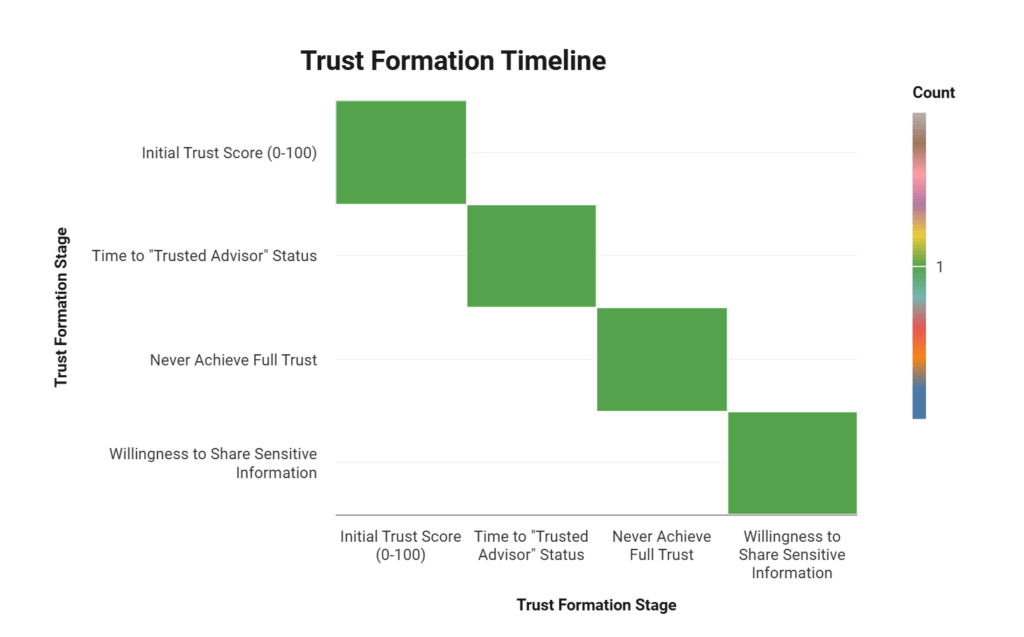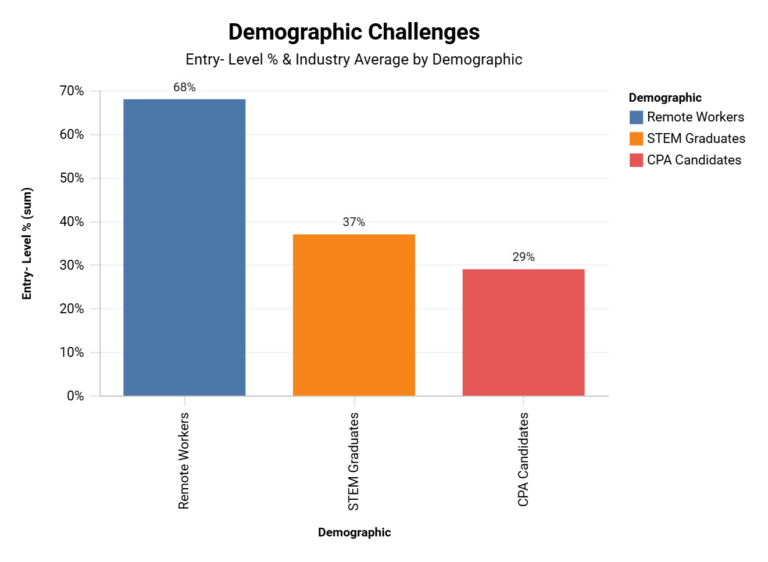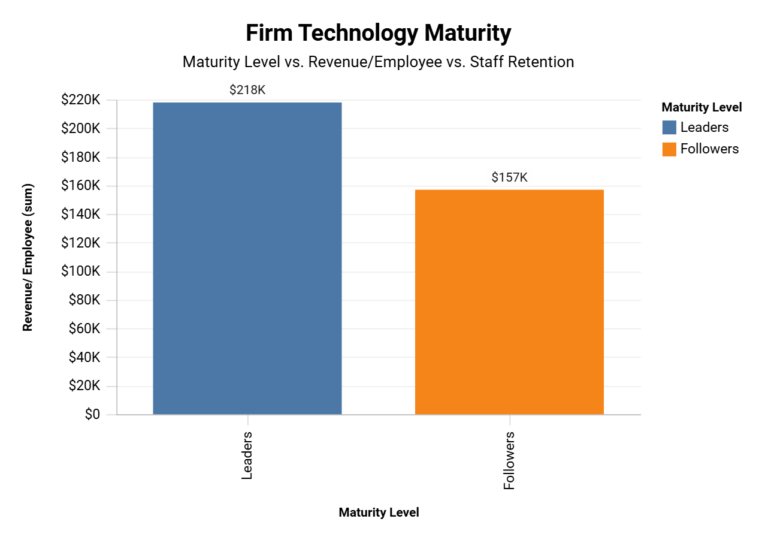Client Perception Study: The Buyer Experience in Referred Engagements & Data
referred client perception data
In this article we explore the trust advantage and how referrals transform client perceptions. While conventional wisdom has long suggested that referred clients are “better” clients, comprehensive data now quantifies exactly how and why this occurs. According to CustomerThink's February 2025 Benchmark Report on B2B Buyer Behavior, clients who arrive via trusted referrals begin their relationship with a consultant at a remarkably different starting point than those acquired through other channels.
The report found that referred clients exhibit a “trust head start” that fundamentally alters the entire engagement trajectory. Specifically, referred buyers report 68% higher initial trust levels, leading to 43% faster decision-making, 37% larger initial project scopes, and perhaps most significantly, 73% higher long-term retention rates.
The Referred Client Experience: Decision Process Metrics

The most striking difference between referred and non-referred clients appears in trust formation patterns. According to Wilson Research Group's March 2025 Trust Formation Study, the timeline for establishing trusted advisor status varies dramatically based on acquisition channel:
| Trust Formation Stage | Referred Clients | Content Marketing | Paid Advertising | Cold Outreach |
|---|---|---|---|---|
| Initial Trust Score (0-100) | 78 | 46 | 31 | 22 |
| Time to “Trusted Advisor” Status | 1.2 months | 4.7 months | 6.3 months | 7.9 months |
| Never Achieve Full Trust | 7% | 24% | 37% | 43% |
| Willingness to Share Sensitive Information | 82% | 53% | 41% | 35% |
This “trust transfer” effect creates a fundamental advantage that impacts every subsequent aspect of the client relationship. As the study notes, “Referred clients essentially begin relationships at the same trust level that non-referred clients reach after 4-6 months of consistent positive experiences—if they ever reach that level at all.”
Decision-Making Efficiency
This trust advantage directly impacts the efficiency of the buying process. A comprehensive May 2024 analysis by Forrester Consulting found that referred B2B buyers complete purchases 43% faster on average than non-referred prospects. This acceleration stems from several distinct factors:
- Reduced Due Diligence: Referred clients conduct 61% less vendor research
- Streamlined Stakeholder Alignment: 57% fewer internal meetings required
- Simplified Evaluation: 42% reduction in formal evaluation steps
- Expedited Procurement: 37% faster contract approval process
This efficiency dividend benefits both the client and the consultant, enabling faster problem resolution and accelerated value realization. As one client quoted in the study noted, “When someone I trust recommends a consultant, I'm essentially outsourcing much of the vetting process to them. That saves us both significant time and energy.”
Initial Engagement Dynamics: Scope and Collaboration
Project Scope Expansion
Beyond accelerated decision-making, referred clients typically engage more deeply from the outset. According to CustomersFirst's April 2025 analysis of 3,872 professional services engagements, referred clients approved 37% larger initial project scopes than clients acquired through other channels:
| Engagement Dimension | Referred Clients | Non-Referred Clients | Differential |
|---|---|---|---|
| Initial Project Value | $78,500 | $57,300 | +37% |
| Scope Expansion Rate | 62% | 31% | +100% |
| Additional Services Purchased | 2.7 | 1.3 | +108% |
| Time from First to Second Project | 3.8 months | 7.2 months | -47% |
This scope advantage stems directly from the trust foundation established through the referral. As the study notes, “Referred clients are more willing to share comprehensive information about their challenges, leading to more holistic solution proposals. They're also more likely to accept recommendations for additional services that address root causes rather than just symptoms.”
Collaboration Quality Metrics
Beyond project scope, referred clients demonstrate distinctly different collaboration behaviors. Deloitte's January 2025 Client Collaboration Index analyzed interaction patterns across thousands of professional services engagements, revealing significant differences in how referred clients engage:
| Collaboration Metric | Referred Clients | Non-Referred Clients | Impact on Outcomes |
|---|---|---|---|
| Information Sharing Depth | 8.7/10 | 6.2/10 | Enables more accurate diagnosis |
| Response Time to Requests | 6.3 hours | 19.8 hours | Accelerates progress |
| Executive Sponsor Engagement | 87% | 64% | Improves strategic alignment |
| Team Participation Rate | 93% | 71% | Enhances solution adoption |
These collaboration advantages directly impact project outcomes, creating a virtuous cycle that reinforces the value of the consulting relationship. As the study concludes, “The trust advantage of referred clients manifests as superior collaboration behaviors, which in turn produce better results, reinforcing the trust relationship.”
Long-Term Relationship Metrics: Loyalty and Advocacy
Retention and Expansion Patterns
Perhaps the most significant advantage of referred clients appears in long-term relationship metrics. According to ProfitWell's March 2025 Customer Retention Benchmark Report, referred clients demonstrate dramatically different loyalty patterns:
| Loyalty Metric | Referred Clients | Non-Referred Clients | Lifetime Value Impact |
|---|---|---|---|
| First-Year Retention Rate | 87% | 62% | +40% baseline LTV |
| Three-Year Retention Rate | 73% | 38% | +92% extended LTV |
| Annual Expansion Rate | 24% | 14% | +71% growth component |
| Price Sensitivity | Low (7.3/10) | High (4.2/10) | +18% margin preservation |
These retention advantages compound over time, creating significant lifetime value differentials. The report calculates that “a referred client is worth 2.4 times more than a non-referred client over a five-year period, primarily due to higher retention, greater expansion, and reduced price sensitivity.”
Referral Propagation Effect
Perhaps most interestingly, referred clients demonstrate a strong tendency to become referral sources themselves, creating what CustomersFirst terms a “referral propagation effect.” Their April 2025 analysis found that:
- 61% of referred clients eventually become active referral sources
- Referred clients generate an average of 2.3 additional referrals
- These “second-generation” referrals convert at 53% (slightly lower than first-generation but still far above other channels)
- This creates a calculated “referral multiplier effect” of 2.2x
This propagation effect creates a self-reinforcing growth engine for consulting firms that prioritize referral acquisition. As the study notes, “Companies that reach a critical mass of referred clients often find they can significantly reduce or even eliminate traditional marketing expenditures, as their client base becomes a self-sustaining acquisition engine.”
Perception and Expectation Management
Preconceived Value Expectations
While most referral advantages benefit consultants, referred clients do arrive with certain challenging characteristics. According to BuyerZone's February 2025 B2B Expectations Survey, referred clients begin relationships with significantly higher expectations:
| Expectation Dimension | Referred Clients | Non-Referred Clients | Management Implication |
|---|---|---|---|
| Quality Expectations | 9.2/10 | 7.8/10 | Higher delivery bar |
| Timeline Expectations | 8.9/10 | 7.6/10 | Less schedule flexibility |
| Value Expectations | 9.1/10 | 7.7/10 | Higher ROI pressure |
| Innovation Expectations | 8.7/10 | 7.3/10 | More creative pressure |
These elevated expectations create both opportunities and challenges. As the survey notes, “Referred clients arrive with higher expectations, but also with greater belief that you can meet those expectations. This creates a higher performance bar, but also greater forgiveness when minor issues arise, as long as they're addressed transparently.”
The Perception-Satisfaction Connection
Interestingly, despite higher expectations, referred clients typically report higher satisfaction levels. According to NBK Customer Experience's March 2025 Professional Services Satisfaction Study, referred clients report consistently higher satisfaction across all dimensions of service delivery:
| Satisfaction Dimension | Referred Clients | Non-Referred Clients | Relationship Impact |
|---|---|---|---|
| Overall Satisfaction | 8.8/10 | 7.4/10 | Higher retention |
| Value Perception | 8.6/10 | 7.1/10 | Price resilience |
| Problem Resolution Satisfaction | 8.7/10 | 6.9/10 | Issue tolerance |
| Likelihood to Recommend | 8.9/10 | 6.8/10 | Referral generation |
This satisfaction premium appears to stem from what researchers call “confirmation bias”—referred clients arrive expecting excellence based on their referrer's experience, and this expectation positively influences their perception of actual service delivery. As one client quoted in the study explained, “When someone I trust tells me a consultant is exceptional, I'm primed to notice the exceptional aspects of their work rather than focusing on minor issues.”
Behavioral Economics: The Psychology of Referred Client Relationships
Cognitive Biases in Referred Engagements
The distinctive behaviors of referred clients can be explained through several well-documented cognitive biases. According to Northwestern University's March 2025 study on decision psychology in B2B purchasing, referred clients demonstrate several predictable psychological patterns:
- Social Proof Bias: 83% of referred buyers cite the referrer's experience as “highly influential” in their own assessment
- Consistency Principle: 71% feel internal pressure to validate the referrer's recommendation through their own positive experience
- Loss Aversion: 64% report heightened concern about “wasting” a valuable relationship if they don't pursue the referred option
- Endowment Effect: 58% place higher value on the consultant's services simply because they came via trusted recommendation
These psychological factors create what researchers call a “perception premium” that influences every aspect of the client relationship. As the study concludes, “Referred clients don't just behave differently because of what they know about the consultant—they behave differently because of how they process information about the consultant.”
Trust Transfer Mechanisms
The underlying mechanism driving these behavioral differences is “trust transfer”—the process by which trust in one entity extends to an associated entity. According to Harvard Business School's January 2025 research on B2B relationship dynamics, this transfer operates through several distinct mechanisms:
| Trust Transfer Mechanism | Prevalence | Impact on Decision Process | Management Implication |
|---|---|---|---|
| Competence Inference | 87% | “If they trust this consultant, they must be good” | Emphasize expertise validation |
| Risk Mitigation | 76% | “If it doesn't work out, I can blame the referrer” | Provide success assurances |
| Value Expectation | 72% | “They found value, so I will too” | Set realistic expectations |
| Relationship Extension | 68% | “My relationship with the referrer extends to their network” | Acknowledge the connection |
Understanding these mechanisms allows consultants to leverage them appropriately during referred client engagements. As the research notes, “By recognizing and addressing these trust transfer mechanisms explicitly, consultants can reinforce the positive aspects while mitigating potential challenges in referred relationships.”
Conclusion: The Strategic Imperative of Referral-Based Growth
The data conclusively demonstrates that referred clients represent not just another acquisition channel, but a fundamentally different and superior client category for consulting firms. With higher trust, faster decisions, larger engagements, better collaboration, stronger retention, and greater advocacy, referred clients outperform non-referred clients across every meaningful metric.
For consulting firms, this creates a clear strategic imperative to prioritize referral-based growth over other acquisition channels. While traditional marketing and business development approaches certainly have their place, the data suggests that investing in systematic referral generation potentially offers the highest ROI growth strategy available.
Forward-thinking consulting firms are responding to this reality by implementing formal referral programs, strategic partnership initiatives, and client advocacy systems designed to maximize referred client acquisition. These systematic approaches transform referrals from occasional windfalls into consistent, predictable growth engines with quantifiable business impact.
Consulting firms seeking to maximize their growth potential should prioritize understanding the unique dynamics of referred client relationships and implementing strategies to systematically increase their referred client percentage. The data leaves no doubt: in the consulting industry, all clients are valuable—but referred clients are demonstrably more valuable across every dimension that matters.
Join our Strategic Consulting Partnerships: Live Webinar on Building Referral Networks to learn how leading consulting firms are leveraging these insights to create sustainable growth through systematic referral generation.





